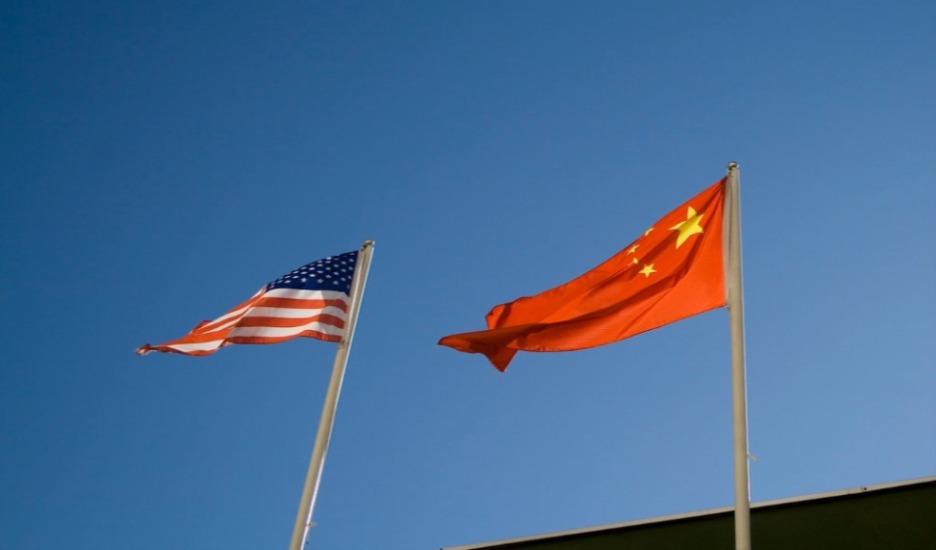Sudan’s Crisis Requires a New Approach to International Aid

Published by The Lawfare Institute
in Cooperation With

Editor’s Note: The war and humanitarian crisis in Sudan does not receive the attention given to Gaza and Ukraine, but the suffering resulting from the crisis is immense. The International Rescue Committee’s Ciarán Donnelly and Reva Dhingra describe the problems facing Sudan and neighboring Chad and call for the international community to revise its approach to humanitarian aid there.
Daniel Byman
***
One year into the civil war in Sudan, the crisis facing the country and the region is only intensifying. Since the eruption of violence between the Sudanese Armed Forces (SAF) and the Rapid Support Forces (RSF)—rival factions of the country’s military—in April 2023, humanitarian needs have skyrocketed. More than 8.6 million people have been forced to flee, making it the largest displacement crisis in the world. Indiscriminate attacks against civilians and gender-based violence are widespread. At least 14,700 people have been killed—likely a significant undercount—and human rights groups have found signs of mass killings and forced displacement along ethnic lines in Darfur. The United Nations has reported that civilians trapped behind conflict lines are dying from starvation, with nearly 5 million people on the brink of famine. This crisis seems likely to continue as a range of fragmented mediation efforts have failed to deliver a ceasefire.
The effects of the civil war are not confined to Sudan. Negative economic shocks, political volatility, and the struggle to meet displaced populations’ needs have deeply impacted bordering countries. Prices have risen sharply in already-fragile South Sudan, where more than 50 percent of the population is facing a hunger crisis. In Chad—host to the largest refugee population in Central Africa, with more than 1 million refugees from Sudan and more than 200,000 refugees from other Central African countries—Sudanese refugees and Chadian citizens face severe food and water shortages.
International efforts to end the war and scale up humanitarian assistance have fallen far short. Attention has been stretched by the wars in Ukraine and Gaza, and Sudan has dropped lower and lower on the list of priorities. The Sudan humanitarian response, which requires $2.57 billion, was 42 percent funded by the end of 2023, and funding for the broader regional refugee response reached less than 40 percent of the needed $1 billion. This year’s response plan is in danger of faring similarly. As of April 11, the UN’s $2.7 billion humanitarian appeal for Sudan was less than 6 percent funded.
The fallout from Sudan’s war will only intensify without immediate international action to end the violence, dramatically scale up humanitarian support, and safeguard humanitarian access. But the regional crisis also underscores the importance of finding new solutions to help communities in Sudan and its neighbors. These countries have been in protracted humanitarian crises for decades, driven by violence, political turmoil, and the rapidly worsening impacts of climate change. As a result, the war’s effects on vulnerable populations have been sharply magnified. A significant increase in humanitarian aid and an immediate end to the conflict must be accompanied by sustainable support for local actors, programming that also addresses the role of climate change, and infrastructural investments in refugee-hosting communities. Otherwise, the humanitarian impacts of the war will continue to compound.
A Broken System
International efforts in the region have long struggled to effectively strengthen service delivery systems, work with civil society groups, and tackle the quickly compounding effects of climate change. Without longer-term approaches, deeply insufficient humanitarian assistance has become a “Band-Aid” for addressing systemic governance and economic challenges in the region.
A key challenge is the widening global gap between funding and humanitarian needs. Amid stretched global attention, protracted crises in countries such as Sudan, Chad, and South Sudan have received less funding and visibility. In Sudan, decades of violence and instability, macroeconomic factors, and poor harvests as a result of both conflict and climate change had made a quarter of the population food insecure prior to the war’s outbreak in 2023. Yet even as the number of food-insecure Sudanese doubled between 2021 and 2022, funding shortfalls forced organizations such as the World Food Programme to cut vital food assistance.
Chad—Sudan’s western neighbor and one of the world’s poorest countries—has also been in humanitarian crisis for years. However, refugee responses for the country have been chronically underfunded, and refugees and host communities alike live in extreme poverty. This point was underscored on a recent visit to the Chad-Sudan border: Refugees spoke of the impossibility of providing sufficient food for their families, while local leaders emphasized that many Chadians face similar scarcity.
The challenges facing Sudan and the region extend beyond the deeply underfunded humanitarian response. These countries have suffered from a long-term lack of investment in critical infrastructure, such as health care and sanitation, and support for local economies. Communities that were already impoverished have been severely harmed by the civil war.
Part of the issue has stemmed from the fact that multilateral and bilateral development actors often have lower tolerance for risk and less experience in supporting service delivery in conflict zones than humanitarian organizations. In addition, systems-strengthening approaches by actors such as the World Bank are often reliant on national government partnerships rather than local government and communities—an approach often difficult to achieve in conflict zones. This has meant that the bulk of support for these countries has long been short term and focused on basic assistance.
Amid severe humanitarian access challenges in Sudan and insufficient international attention to refugee-hosting communities in Chad and South Sudan, local actors—including mutual aid groups—have played critical roles in helping the most vulnerable even prior to the current conflict. However, these local efforts have not been supported or effectively linked with the larger-scale international efforts, which has limited their sustainability.
Finally, both Sudan and its neighbors are also experiencing the intensifying effects of climate change. This trend has compounded the food insecurity and water shortages for both displaced and refugee-hosting communities. Chad is facing rapid environmental degradation, pushing a highly agriculturally reliant population further into poverty. In South Sudan—one of the most rapidly warming countries in the world—record flooding has left 15 percent of the country submerged year-round, up from 5 percent just several years before. Tens of thousands of South Sudanese were displaced by the floods in Sudan, until many were forced to return as they fled the civil war in 2023.
Though the effects of climate change have been drastic, countries in the region have struggled to access financing for adapting to them. This reflects a global trend: Conflict-affected states highly exposed to climate change receive 66 percent less climate financing per capita than non-conflict-affected countries.
A New Approach
Much more concerted diplomatic engagement and pressure on external backers of the warring sides is needed to both immediately end the war and safeguard humanitarian access. Otherwise, it will be nearly impossible to protect communities and ensure that organizations can deliver aid safely. In the Sudanese state of El Gezira—formerly a haven for hundreds of thousands of internally displaced people—many aid organizations were forced to suspend their operations and relocate their staff in December 2023 due to widespread violence.
Bilateral and multilateral donors should also support a sustained, multidimensional approach to assistance that brings in development actors, includes partnerships with local groups, and helps communities invest in climate adaptation.
First, the international community should sharply increase humanitarian aid by fully funding the Sudan humanitarian and regional refugee response plans. Organizations on the ground do not have enough funding to provide basic food assistance for communities on the brink of famine. Increased aid must include stronger support for local mutual aid and civil society groups working behind conflict lines. It should also include funds for cash assistance to help people access food through local markets and to ensure market actors can continue to operate.
Second, development actors should scale up support to neighboring refugee-hosting communities, including through increased partnerships with nongovernmental organizations (NGOs). In South Sudan, the World Bank has tested directly financing NGOs to deliver health care in coordination with the government—enabling the project to reach triple the 300,000 people initially targeted. Together, development, humanitarian, and local actors can provide sustainable support for communities.
Third, communities experiencing the deadly effects of both conflict and climate change cannot be left out of climate adaptation financing. In December, parties at the annual UN Climate Change Conference (COP28) highlighted the importance of supporting conflict-affected states. This promise must be translated into action for communities in Sudan, South Sudan, and Chad. Multilaterals, including the African Development Bank and the Islamic Development Bank, have taken concrete steps to include fragile and conflict-affected countries in climate financing opportunities.
One year into the conflict, the status quo is untenable for both Sudan and the region. In addition to redoubled efforts to negotiate a ceasefire and achieve a long-lasting peace, the international community must implement new approaches to help ensure populations impacted by both the current war and decades of conflict and instability can rebuild their lives. Without urgent action, it will be impossible to alleviate these interlocking crises.




.jpg?sfvrsn=5a43131e_9)

